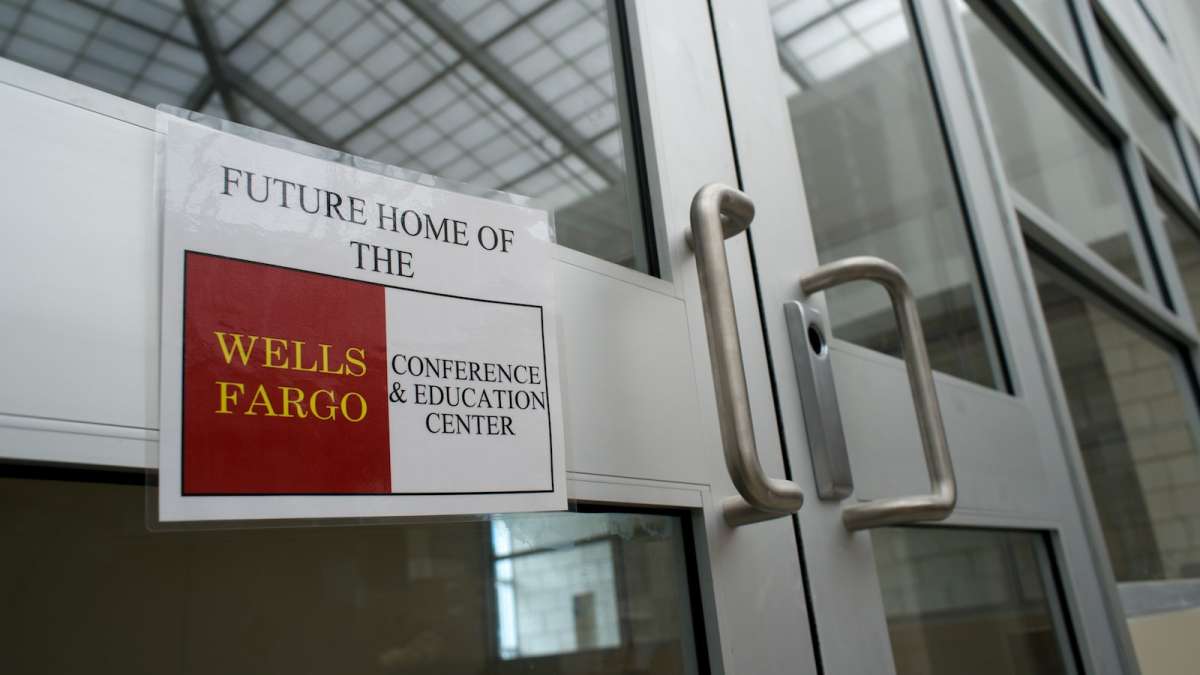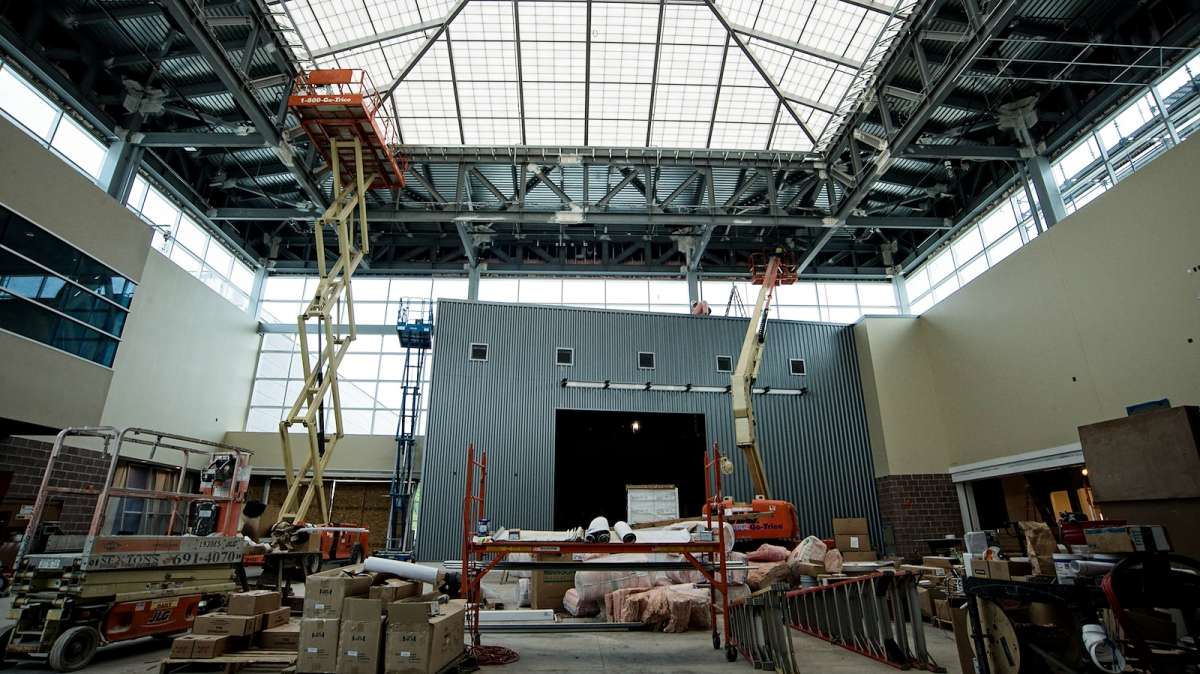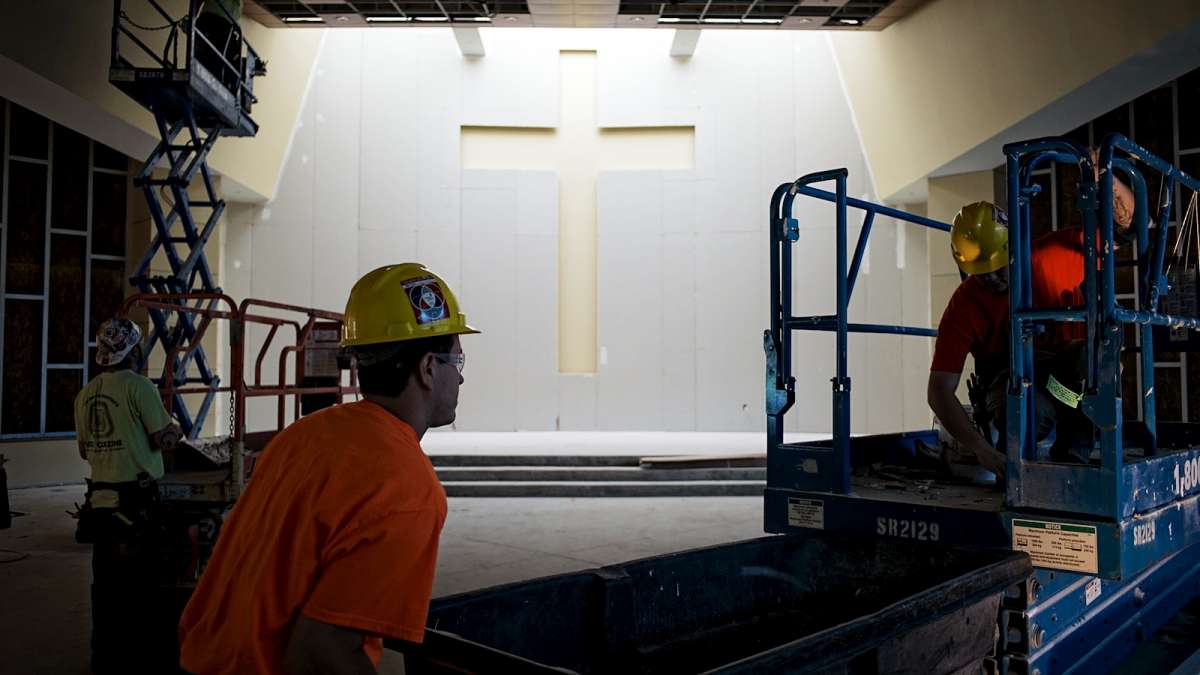A Salvation Army Kroc Center could be a game changer for Camden
“Big center, big impact, big goals; Our aim is to be an agent of change for generations.”
Standing in a dramatically light-swept, partially-constructed edifice in the center of the poorest city in America, Camden Salvation Army administrator Major Paul Cain might have added, “big opportunity” and “big responsibilities” to his list.
As the man charged with overseeing the construction and subsequent operation of one of the largest and most ambitious Salvation Army Kroc centers on the east coast, Cain knows there are many expectant eyes watching his $67 million project rise from the ground. But with financial backing from the heiress to the McDonald’s fortune and support from politicians and citizens across the state, it’s hard to imagine a scenario under which he could fail – even in Camden, a city where broken promises litter modern history like spent needles on a playground.
In fact, Major Cain does talk needles — but not the drug kind. As he says, the Salvation Army’s objective for the project is to move the sociological needle by giving many city dwellers their first chance to participate in activities like Zumba classes, book clubs, swim meets and theatrical productions in a safe, staffed environment that may – if all goes as planned – bring them into regular social contact with the region’s suburbanites. That’s if said suburbanites allow The Ray and Joan Kroc Corps Community Center to become the destination that finally convinces them to venture into Camden’s neighborhoods.
The Kroc Center in Camden will be the second super-sized Salvation Army community center in the Philadelphia region. A Kroc Center opened in North Philadelphia in 2010. The two are among nearly two dozen other Kroc Centers operating in the U.S.
The Kroc Center doesn’t have an exact opening date set but a soft opening will likely happen late this summer. A grand opening will likely follow in October.
The Kroc Center in Camden is designed to appeal to families of all incomes. Its facilities are by design going to be a nice as anything you could find in the private sector.
What it will have:
For fitness: a field house and workout center, two pools, a spacious hot tub, a rock-climbing wall, and a two-story water slide. For relaxation and enrichment: conference and meeting space, a 250-seat black-box theater, a chapel-slash-auditorium, a book-exchange library, individual spaces for teens, seniors and children, and a cyber-café and a lobby-like lounge with nine wall-mounted flat-screen TVs.
And for those in need of social or commercial services: a health clinic, a modern food pantry, an industrial kitchen, and eventually a daycare center and maybe a Laundromat. There will also be full-time guest-services employees and volunteers, nighttime security and a drop-in office for the county police.
And that’s just what’s physically inside the building. Outside, spread across 24 acres of a remediated landfill hard against the Delaware River, will be two little league baseball fields, a soccer field, running trails, basketball courts, playgrounds and picnic areas with waterfront views of Philadelphia.
Then there’s the programming. Between the classes like music, dance and financial literacy, there will also be an in-house acting troupe.
Some amenities will be free and others will require an annual membership – between $239 and $400 for a family of four, though scholarships will be available.
“It’s the biggest project within a generation for the Salvation Army in New Jersey,” said Cain.
The Kroc Center is a gift to Camden, both figuratively and literally. When McDonald’s heiress Joan Kroc died, she left $1.6 billion to the Salvation Army to build and operate transformational Kroc Centers around the country. Camden applied and won. Included in that figure is an endowment to help fund one-third of the Camden center’s operations in perpetuity.
As generous as it was, Kroc’s gift came with strings attached. In order to ensure public buy-in to the process, she required that each winning Salvation Army chapter raise a certain amount of matching funds. To date, Camden has raised $9 million of its $10 million goal with the assistance of a neighborhood revitalization tax credit from the state and dozens of major corporate sponsors – Campbell Soup, Lockheed Martin, Cooper University Health Care, Subaru, and Wells Fargo among them — and community donors like the Cramer Hill Community Development Corp., Cooper’s Ferry Partnership and many of South Jersey’s trade unions.
“Almost everyone in the region has some sort of tie to Camden and a strong heart for Camden,” said Manny Delgado, executive director of the Cramer Hill CDC.In order to make those people feel comfortable coming back, Delgado and Cain are working with public agencies to ensure getting to the Kroc Center is easy and hassle free. That plan includes direction signs, direct bus routes and more police patrols.
It’s hoped that the Kroc Center can help revitalize the neighborhood and the waterfront area where the Cooper River meets the Delaware River. “People will want to live near the Kroc Center. Having a daycare will let people go out and find employment, and now our vacant lots actually have a value. I imagine the City will now look to take care of our issues,” Delgado said. “Until now it’s been just us.”
WHYY is your source for fact-based, in-depth journalism and information. As a nonprofit organization, we rely on financial support from readers like you. Please give today.























